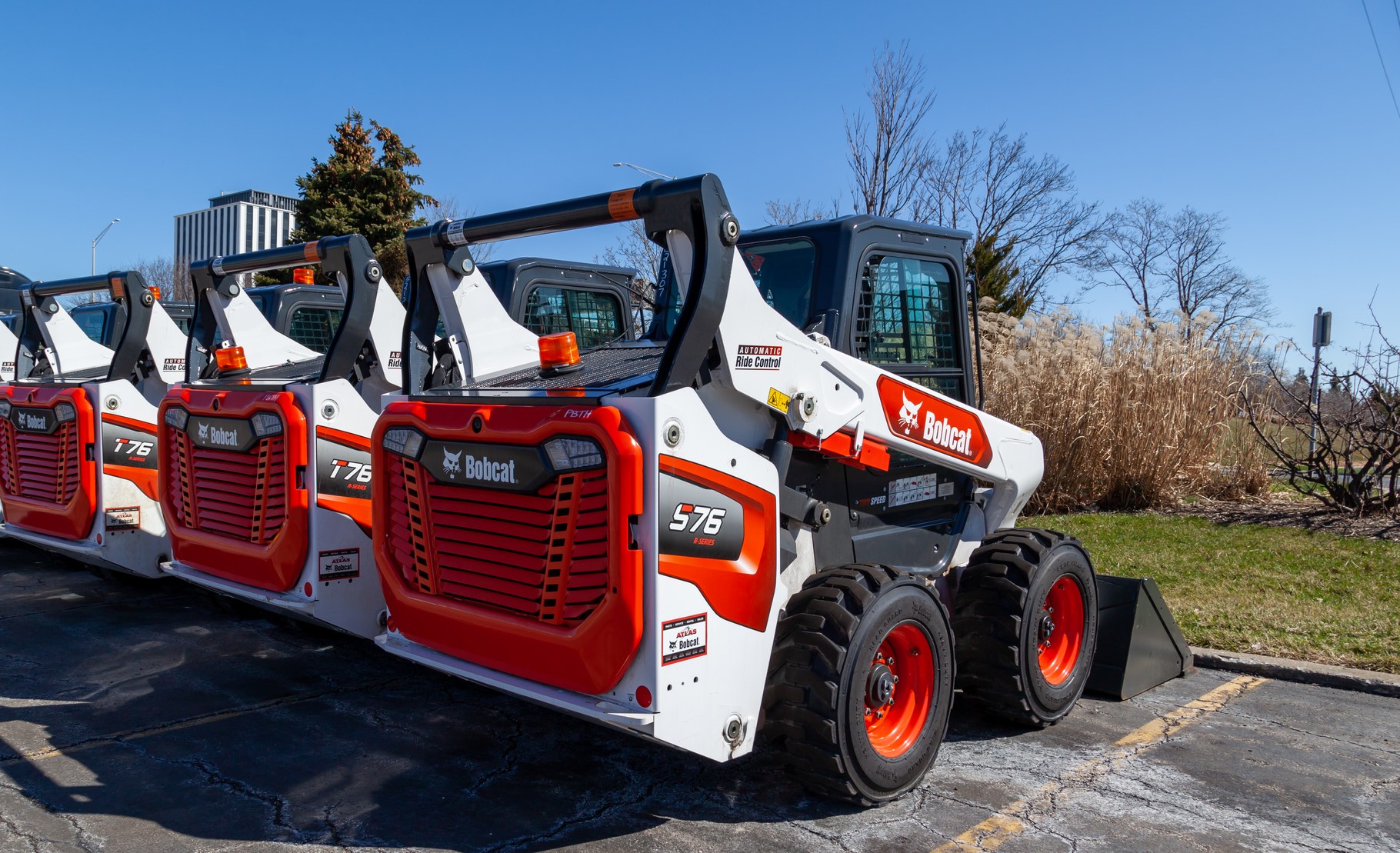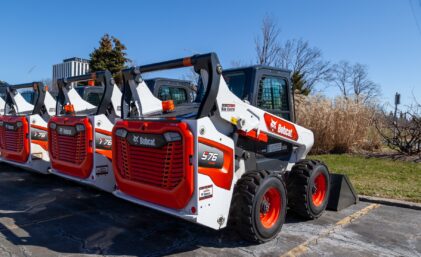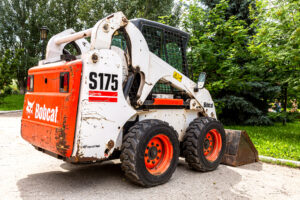Table of Contents
- 1 Safety First: Essential Precautions for Handling Hydraulic Coupler Leaks
- 2 What NOT to Do for Leaking Auxiliary Hydraulic Couplers
- 2.1 1. Don’t Use Your Hands to Check for Leaks
- 2.2 2. Don’t Over-Tighten Fittings
- 2.3 3. Don’t Forget to Depressurize the System Before Handling Fittings
- 2.4 4. Don’t Reuse Old or Damaged O-Rings
- 2.5 5. Don’t Assume the Leak Originates at the Fitting
- 2.6 6. Don’t Ignore the Flammability Risks of Hydraulic Fluid
- 2.7 7. Don’t Ignore Small or “Minor” Leaks
- 3 Best Practices for Preventing Leaks in Bobcat Auxiliary Hydraulic Couplers
- 4 Replacing Bobcat Auxiliary Hydraulic Coupler
- 5 Stucchi’s Custom Hydraulic Solutions for Bobcat Equipment
- 6 Explore Stucchi’s Hydraulic Solutions for Bobcat Mini Excavator Attachments and Skid Steers
Experiencing leaks in your Bobcat auxiliary hydraulic couplers on excavators or skid steers can be frustrating, especially when they disrupt workflow and increase maintenance costs. But more than just a nuisance, leaking hydraulic couplers pose serious safety risks if not handled correctly.
This guide will walk you through essential safety precautions, outline common mistakes to avoid, offer preventative tips, and recommend top-quality solutions from Stucchi to help you keep your Bobcat equipment running efficiently and safely.
Safety First: Essential Precautions for Handling Hydraulic Coupler Leaks
Hydraulic leaks are not only inconvenient; they can be dangerous. Pressurized hydraulic systems contain fluid that reaches extremely high temperatures and pressures. Any leaks from these systems can result in high-velocity fluid spray, which has the potential to burn, inject into the skin, or even ignite. Taking the right safety precautions is the first step to addressing leaks effectively and avoiding potentially severe injuries.
Here’s a checklist to ensure safe handling of hydraulic coupler leaks:
Wear Appropriate PPE
- Personal protective equipment is crucial when working with hydraulic systems. Gloves, goggles, and protective clothing should be non-negotiable. Gloves shield your skin from hot hydraulic fluid, while goggles protect your eyes from pressurized spray. Even a small leak can cause harm, so prioritize safety gear to protect yourself.
Depressurize the System Before Inspection
- Never attempt to inspect or repair a hydraulic system under pressure. Even if the leak appears minor, residual pressure can cause fluid to release with dangerous force. Most Bobcat models, including skid steers and excavators, have pressure-release mechanisms on the auxiliary couplers. Before disconnecting or inspecting the couplers, press the release buttons on both top and bottom couplers to safely relieve trapped pressure.
Avoid Using Your Hands to Detect Leaks
- While it may seem natural to feel for a leak, using your hands is highly risky. High-pressure fluid, even from a tiny pinhole leak, can penetrate the skin and cause severe injuries, including fluid injection injuries that require immediate medical attention. Instead, use a piece of cardboard, paper, or a similar material to identify leaks safely. This allows you to pinpoint the leak location without risking skin contact with hot or high-pressure hydraulic fluid.
Keep a Fire-Safe Area Around the Hydraulic Leak
- Hydraulic fluid is flammable, especially in mist form, which can form if there’s a high-pressure leak. Make sure to keep any ignition sources—cigarettes, lighters, welding torches, or other flames—well away from any area with a suspected leak. This added precaution prevents potential fire hazards and is crucial for job site safety.
Following these essential safety steps will help protect you and others on the job site while setting the stage for safe, effective repairs. In addition to observing safety, understanding the common pitfalls to avoid and employing preventive maintenance can go a long way in managing and preventing leaks.
What NOT to Do for Leaking Auxiliary Hydraulic Couplers
When it comes to managing hydraulic leaks, taking the wrong steps can increase safety risks, compromise equipment performance, and even worsen the issue. Avoid these common mistakes to handle leaking auxiliary hydraulic couplers on your Bobcat equipment effectively.
1. Don’t Use Your Hands to Check for Leaks
Hydraulic fluid can reach extreme temperatures, often exceeding 300°F, and may be pressurized to dangerous levels. Even a tiny pinhole leak can eject fluid with such force that it can penetrate skin, causing severe injuries. Using your hands to check for leaks can result in burns or fluid injection injuries, both of which require immediate medical attention. Instead, use a piece of cardboard or a similar material to locate leaks safely. For a longer-term solution, consider Stucchi’s Auxiliary Kits, designed for high-temperature environments and reliable, leak-proof performance.
2. Don’t Over-Tighten Fittings
While a loose fitting can cause fluid leaks, over-tightening can be just as problematic. When fittings are too tight, it can damage the threads or crush the O-ring, compromising the connection and worsening the leak. Over-tightening can also warp metal components, leading to alignment issues that may become costly repairs down the road. The best approach is to inspect the fitting carefully and tighten only as needed for a snug fit without excessive force. Stucchi’s quick couplers are engineered to form a secure, leak-resistant seal without the need for over-tightening, ensuring a reliable fit and a longer lifespan for your couplers.
3. Don’t Forget to Depressurize the System Before Handling Fittings
Failing to depressurize your hydraulic system before checking or repairing leaks is one of the most common mistakes and poses significant safety hazards. Pressurized hydraulic fluid can be released with unexpected force, causing injury and further damage to equipment. Most Bobcat skid steers and excavators feature a pressure release function on the auxiliary couplers—look for the pressure release buttons located on both the top and bottom couplers. Always press these release buttons to safely relieve trapped pressure before handling any fittings.
4. Don’t Reuse Old or Damaged O-Rings
O-rings are essential for creating a tight seal, but they wear down over time, becoming brittle and prone to cracks. Reusing an old or damaged O-ring can lead to immediate leaks or a rapid decline in performance, especially under pressure. Always use new, high-quality O-rings when reassembling or repairing fittings to ensure a robust, reliable seal. For guidance on replacing O-rings correctly, check out Stucchi’s instructional video on How to Replace Seals on a Flat Face Coupler, which covers the full process to help you achieve a successful seal replacement.
5. Don’t Assume the Leak Originates at the Fitting
Hydraulic leaks often appear at the lowest point of the system due to gravity, which can cause fluid to drip away from the actual source. This means the leak may not necessarily be coming from the fitting where you see fluid dripping. Before concluding that the visible drip is the primary issue, carefully inspect the entire hydraulic line and trace the leak back to its true origin. Use a methodical approach to follow the line and look for wear, damage, or loose connections elsewhere in the system.
6. Don’t Ignore the Flammability Risks of Hydraulic Fluid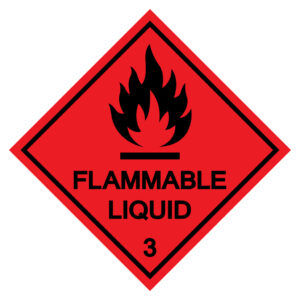
Hydraulic fluid is highly flammable, especially in mist form, which can develop if there’s a high-pressure pinhole leak. Even a small mist cloud can ignite in the presence of open flames or sparks. Always keep any sources of ignition, such as cigarettes, lighters, or welding equipment, far away from a hydraulic leak. For added safety, Stucchi’s connect-under-pressure couplers are designed to handle high-pressure connections without the risk of misting or spraying, reducing the chance of flammable conditions.
7. Don’t Ignore Small or “Minor” Leaks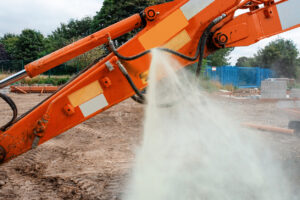
A small leak might seem inconsequential, but it’s often an early sign of a more significant problem. Minor leaks can lead to larger issues over time, including inefficiency, increased maintenance costs, and potential equipment failure. In addition to the immediate risk of lost hydraulic fluid, small leaks can cause contaminants to enter the system, damaging components and reducing performance. Address any leaks promptly, regardless of size, and if in doubt, consult a Stucchi expert to assess the situation and recommend the best course of action, whether it’s replacing the coupler or upgrading to a more durable solution.
By avoiding these common mistakes and following best practices, you can ensure the safe and efficient operation of your Bobcat auxiliary hydraulic couplers. For reliable, high-performance solutions, consider Stucchi’s couplers and auxiliary kits, designed to handle high pressures and prevent leaks, keeping your Bobcat equipment running smoothly and safely.
Best Practices for Preventing Leaks in Bobcat Auxiliary Hydraulic Couplers
Preventative maintenance and proper handling can go a long way in preventing leaks in your Bobcat auxiliary hydraulic couplers. By following these best practices, you can keep your equipment in optimal condition, reduce downtime, and extend the life of your hydraulic components.
- Apply Lubricant to O-rings and Threads
A light layer of hydraulic oil on O-rings and threads enhances the seal, reduces friction, and helps prevent premature wear. This simple step can significantly prolong the life of O-rings, ensuring they maintain a tight seal under pressure. - Maintain Proper Hydraulic Fluid Temperatures
Hydraulic systems are sensitive to temperature fluctuations, which can cause seals to expand, contract, or even crack. Monitoring and maintaining consistent hydraulic fluid temperatures helps prevent temperature-induced leaks and keeps your couplers performing reliably. If operating in extreme temperatures, consult Stucchi for temperature-rated coupler solutions. - Minimize Vibration
Continuous vibrations from heavy machinery can gradually weaken hydraulic connections and lead to leaks. Use anti-vibration mounts where possible and securely fasten couplers to minimize movement and stress on hydraulic fittings. - Use High-Quality Fittings
Not all quick couplers are built to the same standards. Stucchi’s couplers are designed with durability and reliability in mind, making them compatible with Bobcat equipment and less prone to leaks. High-quality fittings reduce the likelihood of connection issues, ensuring your hydraulic system stays leak-free for longer. - Schedule Preventative Maintenance
Routine inspections are essential for catching minor issues before they develop into major problems. Regularly check for signs of wear, loose connections, and damaged seals to prevent costly leaks and unexpected system failures. Scheduling periodic maintenance helps ensure that your hydraulic system remains in top condition.
By implementing these best practices, you can help prevent leaks and keep your Bobcat auxiliary hydraulic couplers operating at peak efficiency.
Replacing Bobcat Auxiliary Hydraulic Coupler
Anytime you do experience a leak with your Bobcat auxiliary hydraulic couplers, it is best to replace the coupler rather than attempt to rebuild it. Stucchi offers quick couplers compatible with brand names such as Bobcat, Caterpillar, John Deere, Kubota, and other skid steer couplers, which provide proven long-lasting performance. Check out our video section for several helpful, instructional videos, including How to Upgrade Your Bobcat 870 Skid Steer Auxiliary Hydraulics to High Flow.
Video – Upgrade Your Bobcat 870 Skid Steer to Handle High Flow
When dealing with persistent leaks in auxiliary hydraulic couplers, replacing the coupler is often a more effective long-term solution than attempting repeated repairs. Leaks can compromise the integrity of the entire hydraulic system, leading to inefficiencies and increased wear. Replacing a faulty coupler ensures a reliable seal and helps maintain optimal performance.
For step-by-step guidance, refer to our resource on How to Replace Bobcat Hydraulic Quick Couplers. This guide provides essential tips and procedures to follow for a safe, effective replacement process.
Stucchi also offers Auxiliary Hydraulic Kits that upgrade Bobcat couplers to heavy-duty solutions. These kits are compatible with high-flow applications on Bobcat skid steers and excavators, offering enhanced durability and leak resistance to meet the demands of heavy-duty usage.
We provide customized hydraulic solutions, such as this Bobcat Bracket Conversion, that feature our VEP threaded, flat-face series for heavy-duty, long-lasting performance.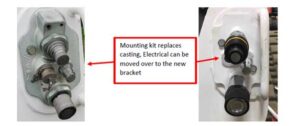
Stucchi’s Custom Hydraulic Solutions for Bobcat Equipment
Stucchi provides custom hydraulic solutions for Bobcat equipment, including the Bobcat Bracket Conversion Kits featuring VEP threaded, flat-face series couplers. These solutions are specifically designed for enhanced performance and durability, particularly in high-pressure environments.
Our custom kits reduce leak risks and improve the longevity of hydraulic components, making them ideal for operators who rely on their Bobcat equipment for tough applications. By choosing Stucchi’s high-quality, custom solutions, operators can maintain hydraulic integrity, reduce downtime, and improve overall efficiency on the job.
Explore Stucchi’s Hydraulic Solutions for Bobcat Mini Excavator Attachments and Skid Steers
Stucchi is committed to providing hydraulic solutions tailored to the unique needs of Bobcat mini excavators and skid steers. Our solutions cater to specific applications and equipment requirements:
- For Skid Steer Applications: If you’re looking to improve hydraulic flow, check out our guide on How to Upgrade Your Bobcat 870 Skid Steer Auxiliary Hydraulics to Handle High Flow. This resource offers insights on enhancing the hydraulic performance of your skid steer with Stucchi’s solutions.
- For Mini Excavator Attachments: Our Hydraulic Solutions for Bobcat Mini Excavator Attachments are designed to maximize productivity and minimize downtime, providing robust, leak-resistant hydraulic connections for a variety of Bobcat mini excavator attachments.
Handling and preventing leaks in Bobcat auxiliary hydraulic couplers is essential for maintaining safe and efficient operations, whether on excavators or skid steers. By following best practices, investing in high-quality replacements when necessary, and considering custom solutions like Stucchi’s Auxiliary Hydraulic Kits, operators can prevent common leak issues and optimize their equipment’s performance. To explore more options and learn about the right hydraulic coupler solutions for your Bobcat equipment, visit Stucchi’s Hydraulic Solutions page, or contact us directly for expert guidance. Let Stucchi help you keep your equipment running smoothly and efficiently, with durable, high-performance hydraulic solutions.
Stucchi offers a range of reliable quick-connect solutions tailored to Bobcat equipment, providing safe, cost-effective options for leak prevention and efficient hydraulic system management. For personalized support, explore our Auxiliary Hydraulic Kits or reach out to a Stucchi representative to find the ideal solution for your equipment. Contact Stucchi for a range of hydraulic quick coupler solutions including Bobcat auxiliary hydraulic couplers.

